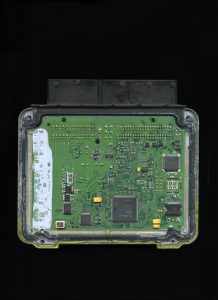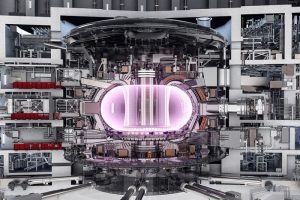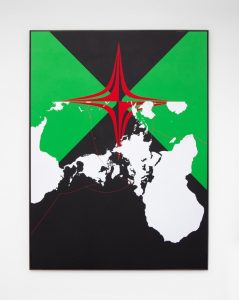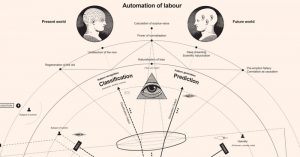Previous stories about the exhibition: AUTO. SUEÑO Y MATERIA – Cars and landscapes and AUTO. SUEÑO Y MATERIA – Artificial traffic jam in the mountains.
At the beginning of the 20th century, cars were hand built by small teams of highly skilled craftsmen and women. Only an elite could afford to buy one until Henry Ford developed a system of mass-producing cars on conveyor belt-based ‘assembly lines’ and introduced standardized interchangeable parts. The mass production lowered the unit price of cars, making them affordable for the average consumer.
Tobias Rehberger takes history backwards. In 1999, the artist embarked on a project that saw him sending simple sketches, composed essentially from memory, of iconic cars such as a Porsche 911 and a McLaren F1 to a workshop in Thailand.
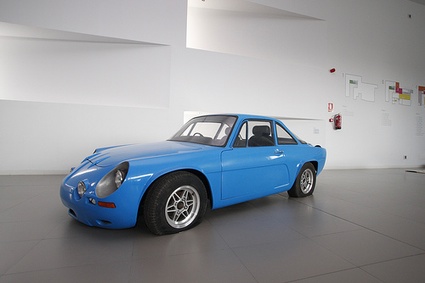 Tobias Rehberger, Tod Man Plaa, 2004 (photo Enrique G. Cardenas)
Tobias Rehberger, Tod Man Plaa, 2004 (photo Enrique G. Cardenas)
The artist who grew up near Stuttgart -often nicknamed the cradle of the automobile– selected Thailand, the Detroit of Asia, because the country is also known for its knockoffs of pretty much anything ‘the West’ produces.
The instructions, sketches, clippings from newspapers and renderings he sent in Thailand didn’t contained any measurements nor technological details. The only requirements were that the cars had to be drivable and built to human scale. No matter how carefully the Thai craftsmen worked, the resulting vehicles can only reflect the meagre instructions the artist sent them. But Rehberger likes the imperfections because the way they enhance the personal stories behind his work. For the Renault Alpines (the model currently on show at Laboral), he just gave the men the info over the phone.
Rehberger claimed that he wanted “to create a car that is in itself a sculpture.” The series makes us re-consider our idea of authenticity. It also softens the line that separates a consumer good from an artwork.
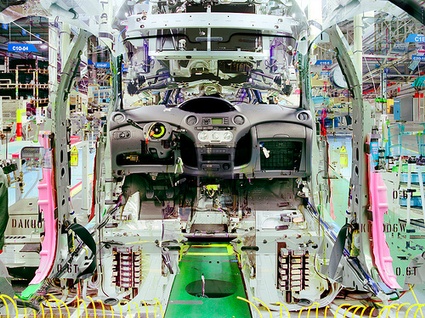 Stéphane Couturier, Série “Melting Point” – Usine Toyota n°9 – Valenciennes, 2007
Stéphane Couturier, Série “Melting Point” – Usine Toyota n°9 – Valenciennes, 2007
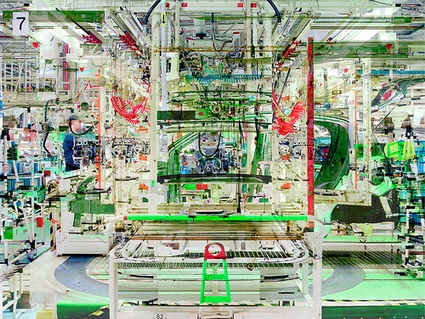 Stéphane Couturier, Série “Melting Point” – Usine Toyota n°1 – Valenciennes, 2005
Stéphane Couturier, Série “Melting Point” – Usine Toyota n°1 – Valenciennes, 2005
Stéphane Couturier‘s series Melting Point superposes two photographs taken in an automobile assembly plant in Valenciennes to create an almost abstract image. However, workers, machines, car parts, belts and surroundings can still be clearly identified. The series examine the connection between the introduction of new technological tools and the inevitable emergence of changes in our vision and perception of reality.
Auto. Sueño y Materia, curated by Alberto Martín, runs until September 21 at Laboral Centro de Arte y Creación Industrial.

